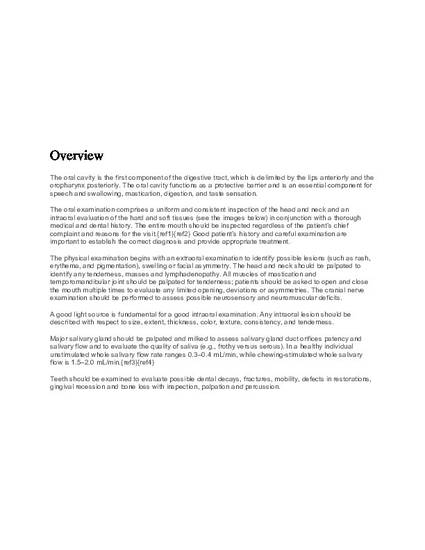
The oral cavity is the first component of the digestive tract, which is delimited by the lips anteriorly and the oropharynx posteriorly. The oral cavity functions as a protective barrier and is an essential component for speech and swallowing, mastication, digestion, and taste sensation.
The oral examination comprises a uniform and consistent inspection of the head and neck and an intraoral evaluation of the hard and soft tissues (see the images below) in conjunction with a thorough medical and dental history. The entire mouth should be inspected regardless of the patient’s chief complaint and reasons for the visit. [1, 2] Good patient’s history and careful examination are important to establish the correct diagnosis and provide appropriate treatment.
The physical examination begins with an extraoral examination to identify possible lesions (such as rash, erythema, and pigmentation), swelling or facial asymmetry. The head and neck should be palpated to identify any tenderness, masses and lymphadenopathy. All muscles of mastication and temporomandibular joint should be palpated for tenderness; patients should be asked to open and close the mouth multiple times to evaluate any limited opening, deviations or asymmetries. The cranial nerve examination should be performed to assess possible neurosensory and neuromuscular deficits.
A good light source is fundamental for a good intraoral examination. Any intraoral lesion should be described with respect to size, extent, thickness, color, texture, consistency, and tenderness.
Available at: http://works.bepress.com/gary_stafford/19/

Published version. Medscape Drugs & Diseases (May 2, 2017). Publisher link. © 2017 by WebMD LLC. Used with permission.